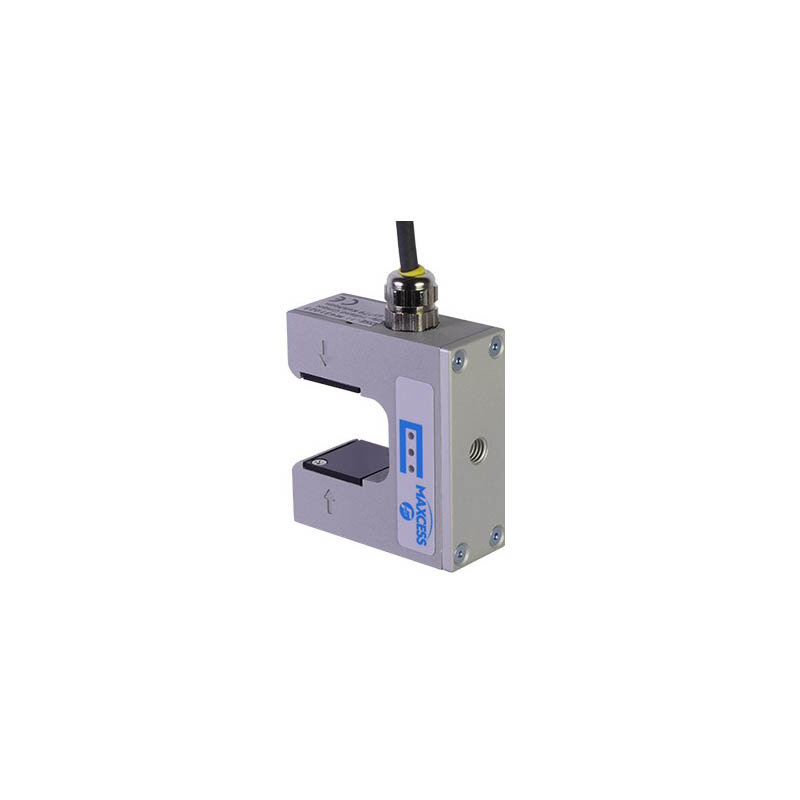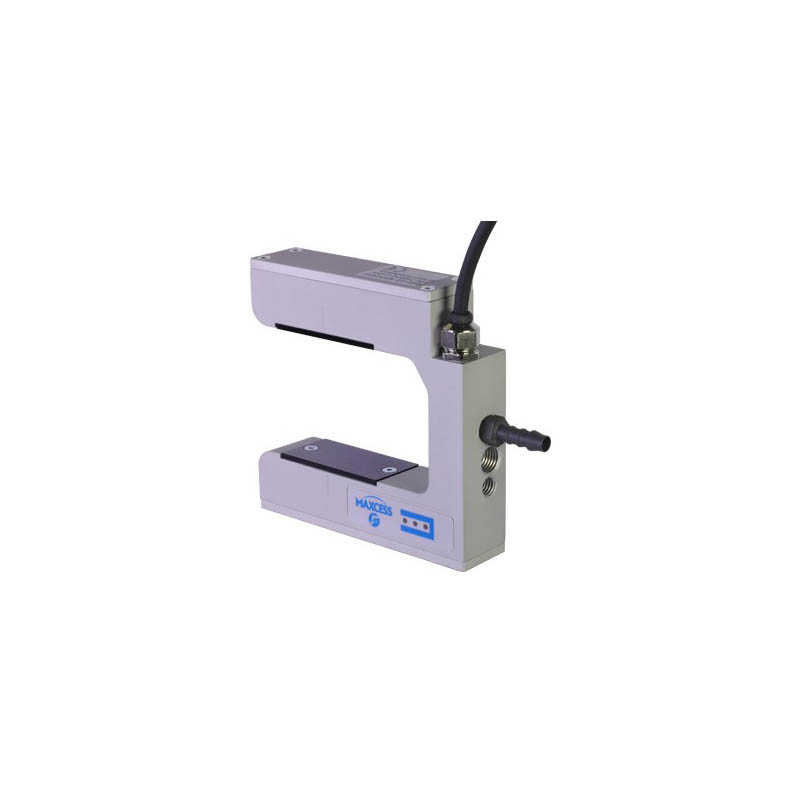Graphics
-
Fife SP-13, SM-1760 Pneumatic Sensors
Read MoreThe SP-13 and SM-1760 are feeler-palm pneumatic sensors that have an extended arm, which physically contacts the edge of the web. The SM-1760 is used to accurately guide many types of slow-moving webs. The SP-13 is a more rugged version of the SM-1760. It features a ceramic pad attached to the feeler palm, and is commonly used with abrasive webs. Optional feeler-palm styles and configurations are available to match your material and installation requirements.
Designed for use with Fife’s pneumohydraulic power units and control systems, these sensors are ruggedly built to handle the most physically demanding applications. Both the SP-13 and SM-1760 have a feeler palm stroke of approximately ±0.3” (7.6 mm), which is extended about 2.0” (52 mm) from the sensor body. (This dimension will vary depending upon the actual feeler palm selected for your application.)
-
Fife DSE-11 Digital Infrared Sensor
Read MoreThe DSE – 11 digital infrared sensor is the smallest infrared sensor available from Fife. Because of its compact size, light weight, and insensitivity to ambient light, it is ideal for many applications where accurate web guiding is required and space is limited.
The DSE – 11 Infrared Sensor measures the lateral position of the guided material photo electrically. The control range (proportional band) allows significant guide point adjustment. The DSE – 11 is often used in pairs for centre guiding when web width variations are limited. Its excellent technical specifications allow it to also be used with a Fife processor to guide clear film. Normally the DSE – 11 is used for guiding opaque materials.
It is possible to operate the DSE – 11 with either a supply voltage of 12 V or 24 V. The output signal would automatically be switched over in that case. In 12 V supply mode the sensor provides an output signal from 0 to 10 mA and can be connected to all available Fife web guide processors. In 24 V supply mode the sensor supplies an output signal between 4 and 20 mA and can be easily connected to a PLC as well.
The DSE – 11 has a built-in LED display, visible from both sides, and shows directly on the sensor information about the operating status like for instance the existence of the supply voltage, position of
the edge of the web inside the field of view or error messages. -
Fife DSE-22 Digital Infrared Sensor
Read MoreBecause of its compact size and insensitivity to ambient light, the digital infrared sensor DSE – 22 is the ideal solution for many applications where accurate web guiding is required.
The DSE – 22 Infrared Sensor measures the lateral position of the guided material photo electrically. The control range (proportional band) allows significant guide point adjustment. The DSE – 22 is often used in pairs for centre guiding when web width variations are limited. Its excellent technical specifications allow it to also be used with a Fife processor to guide clear film. Normally the DSE – 22 is used for guiding opaque materials.
It is possible to operate the DSE – 22 with either a supply voltage of 12 V or 24 V. The output signal would automatically be switched over in that case. In 12 V supply mode the sensor provides an output signal from 0 to 10 mA and can be connected to all available Fife web guide processors. In 24 V supply mode the sensor supplies an output signal between 4 and 20 mA and can be easily connected to a PLC as well.
The DSE – 22 has a built-in LED display, visible from both sides, and shows directly on the sensor information about the operating status like for instance the existence of the supply voltage, position of the edge of the web inside the field of view or error messages.
-
Fife DSE-31 Digital Ultrasonic Sensor
Read MoreThe DSE – 31 digital ultrasonic sensor is the smallest ultrasonic sensor available from Fife. Because of its compact size, light weight, and temperature stability, it is used to guide both clear films and most opaque webs.
The DSE – 31 uses ultrasonic waves to measure the lateral position of the web material. The proportional band allows significant guide point adjustment. The DSE – 31 is often used in pairs for centre guiding when web width variations are limited. The DSE – 31is insensitive to ambient light and it’s used to guide most of the opaque material and clear films. When used with acoustically permeable material a calibration between the sensor and the material is necessary.
It is possible to operate the DSE – 31 with either a supply voltage of 12 V or 24 V. The output signal would automatically be switched over in that case. In 12 V supply mode the sensor provides an output signal from 0 to 10 mA and can be connected to all available Fife web guide processors. In 24 V supply mode the sensor supplies an output signal between 4 and 20 mA and can be easily connected to a PLC as well.
The DSE – 31 has a built-in LED display, visible from both sides, and shows directly on the sensor information about the operating status like for instance the existence of the supply voltage, position of the edge of the web inside the field of view or error messages.
-
Fife DSE-41 Digital Ultrasonic Sensor
Read MoreBecause of its compact size and temperature stability, the digital ultrasonic sensor DSE-41 is the ideal solution for guiding clear films and most opaque webs.
The DSE – 41 uses ultrasonic waves to measure the lateral position of the web material. The proportional band allows significant guide point adjustment. The DSE – 41 is often used in pairs for centre guiding when web width variations are limited. The DSE – 41 is insensitive to ambient light and it’s used to guide most of the opaque material and clear films. When used with acoustically permeable material a calibration between the sensor and the material is necessary.
It is possible to operate the DSE – 41 with either a supply voltage of 12 V or 24 V. The output signal would automatically be switched over in that case. In 12 V supply mode the sensor provides an output signal from 0 to 10 mA and can be connected to all available Fife web guide processors. In 24 V supply mode the sensor supplies an output signal between 4 and 20 mA and can be easily connected to a PLC as well.
The DSE – 41 has a built-in LED display, visible from both sides, and shows directly on the sensor information about the operating status like for instance the existence of the supply voltage, position of the edge of the web inside the field of view or error messages. An optional digital production data acquisition to Fife D-MAXE controller extends the range of applications for the DSE – 41 inside the digital network environment. Additional sensor data can be provided to other hardware equipment if the Fife D-MAXE is linked appropriately to the network.
-
Fife H3257 LED Light Source
Read MoreThe H3257 is an LED light source that provides a uniform light output. By default, the H3257 emits light that is pulsed at 7.5 kHz, making it an excellent choice for discriminating detectors, such as the H3218, H3218E, H3118, H3183, and H3109. The H3257 can be easily configured to emit DC light for compatibility with line scan and array cameras, such as the DAC-005. The H3257 provides a superior alternative to pulsed fluorescent light sources; featuring much greater resistance to shock and vibration, greater tolerance to temperature extremes, and more uniform light intensity. The use of long-life LEDs nearly eliminates maintenance requirements. An internal dry-contact relay indicates the status of the light source. The contact will open under any detected fault conditions.
-
Fife DSS Digital Sensing System
Read MoreThe digital detector from Fife is a non-contact, photoelectric control used to sense the process material edge or centerline in various guiding applications and can provide width measurement for the aforementioned applications or as a stand alone width measurement system.
-
Fife H3194-306-05 Eagle Eye
Read MoreThe ground breaking Eagle Eye detector from Fife is a microprocessor based photoelectric sensor designed to meet the unique requirements of the carpet, textile and other specialized industries.
-
Fife H3218 Center-Guide Detector
Read MoreThe Fife H3218 center-guide detector provides a signal proportional to the center position of a strip of material; independent of material width. Two models of the H3218 are available; depending upon light source choice. The H3218 is for use with the H3137 family of fluorescent light sources. An enhanced version, the H3218E, is for use with the H3157E LED light source. Advanced signal processing allows the H3218 to discriminate between the pulsed light from either the H3137 or H3157 and other sources of light.
-
Fife H3662 Line Scan Sensor
Read MoreThe H3662 Line Scan Sensor is an edge, centerline, or width detecting IR sensor. Using IR light, it illuminates a retro-reflective tape (reflector), which is placed behind the web. The light returned by the reflector is imaged onto a linear array within the sensor. The H3662 compensates for uniform decay of the optics due to dust build-up or discoloration of the lens/reflector cover. An integrated micro-controller analyzes the signal from the array and detects the exact position of the web’s edges.
-
Fife SE-15 Visible Light Sensor
Read MoreSmall, yet accurate, the SE-15 Visible Light Sensor is perfect for web applications where exact guiding is required and space is limited. With a control range of 10.2 mm (0.4 inch), this compact, lightweight sensor is best suited for edge guiding opaque, transparent, or reflective materials in most unwind and rewind applications.
This medium-gap reflex sensor utilizes a reflector mounted on the opposite side of the web and a co-axis optical visible red light for transmitted and received light beams. The effective gap between reflector and sensor can range from 25 mm (1 inch) up to 1 meter (39 inches). The sensor light signal is processed to filter out ambient and reflected light to provide reliable and accurate performance.
-
Fife SE-33 Carpet Tuft Fiber Optic Sensor
Read MoreThe SE-33 Carpet Tuft Sensor utilizes fiber-optic technology to determine carpet tuft position, rather than the edge of the carpet backing. Additionally, the unique design of the SE-33 enables it to guide to any edge regardless of color or shape of the carpet tuft.
The SE-33 has a control range of 0.75 inch (19 mm). In pairs, the sensor can be used for guiding to the center of the carpet tufting. Singularly, it can be used to guide or chase the tuft edge.













